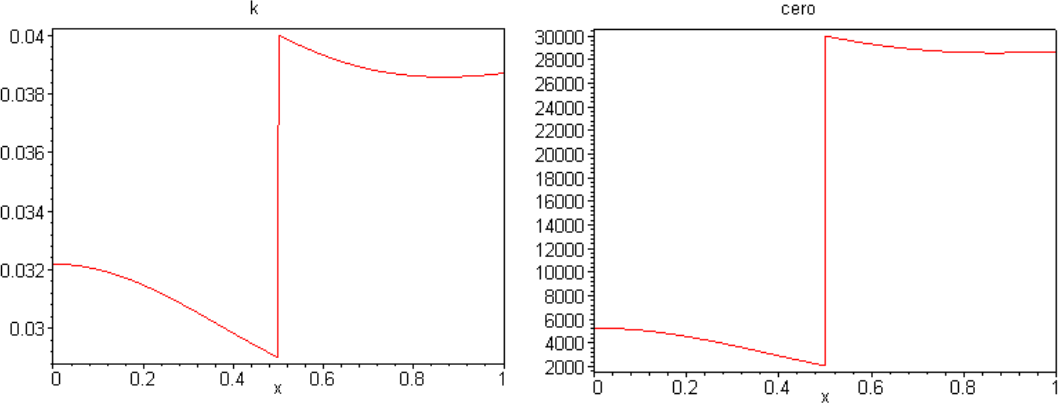
engineering & technology publications
ISSN 1759-3433
PROCEEDINGS OF THE SIXTH INTERNATIONAL CONFERENCE ON COMPUTATIONAL STRUCTURES TECHNOLOGY
Multiresolutional Homogenization Technique in Transient Heat Transfer for Unidirectional Composites
Division of Mechanics of Materials, Technical University of Lódz, Poland

|
The extension of this study are the symbolic computational comparative studies carried out using the system MAPLE performed for various homogenization methods and which collect the effective heat conductivity surfaces plotted as the functions of the contrast between original heat conductivity coefficients and location of the interface between composite constituents. Main conclusion of this analysis is that the spatially averaged heat conductivity returns the greatest values, while the interrelation between classical and multiscale homogenization results depends on the input parameter choice. That is why further symbolic numerical experiments are focused on the parameter sensitivity studies related to the same input design parameters. Final results in the form of sensitivity gradients can be directly used in the homogenization-based optimization of unidirectional composites reflecting the heat transfer needs. Symbolic homogenization results are used in the Finite Element analysis of the original and homogenized by various methods two-component composite cell. Computational studies are carried out by the use of the commercial package ANSYS, release 5.7.1. Both theoretical and computational analysis shows that effective parameters obtained from wavelet-based homogenization method are significantly different from those obtained using classical techniques. Generally, the composite model with wavelet-based defined homogeneous material characteristics gives a more accurate approximation of the real structure behavior than the previous homogenization techniques; analogous observation deals with the error of temperature solution along the structure. The heating process of a composite specimen undergoes in a slightly diffrerent ways in various models – generally the wavelet-based model reaches the steady-state as the first, while the real composite – as the last one. This relation depends on the location of particular materials in the RVE and can be inverted together with reversed order of the constituents.
It is necessary to focus in the future research on more detailed comparison between the homogenized and real models using implementation of the wavelet decomposition algorithm in the system ANSYS [1]. Further both theoretical and numerical studies should be devoted also to the homogenization of composites with time and temperature dependent physical properties of the constituents what frequently takes a place in engineering practice. On the other hand, the homogenization of random composites in terms of multiresolutional technique is possible also and can be used in conjunction with Monte-Carlo simulation or the second order perturbation based implementations in the classical Finite Element Method [4].
- 1
- N.A. Coult, "A Multiresolutional Strategy for Homogenization of Partial Differential Equations". PhD. Thesis, University of Colorado, Boulder, 1997.
- 2
- M. Kaminski, "Wavelet-based homogenization of unidirectional multiscale composites". Comput. Mat. Sci. (submitted). doi:10.1016/S0927-0256(03)00046-6
- 3
- R.K. Young, "Wavelet Theory and Its Applications". Kluwer, 1993.
- 4
- O.C. Zienkiewicz, R. Taylor, "The Finite Element Method". Heinemann- Butterworth, 2000.
purchase the full-text of this paper (price £20)
go to the previous paper
go to the next paper
return to the table of contents
return to the book description
purchase this book (price £125 +P&P)